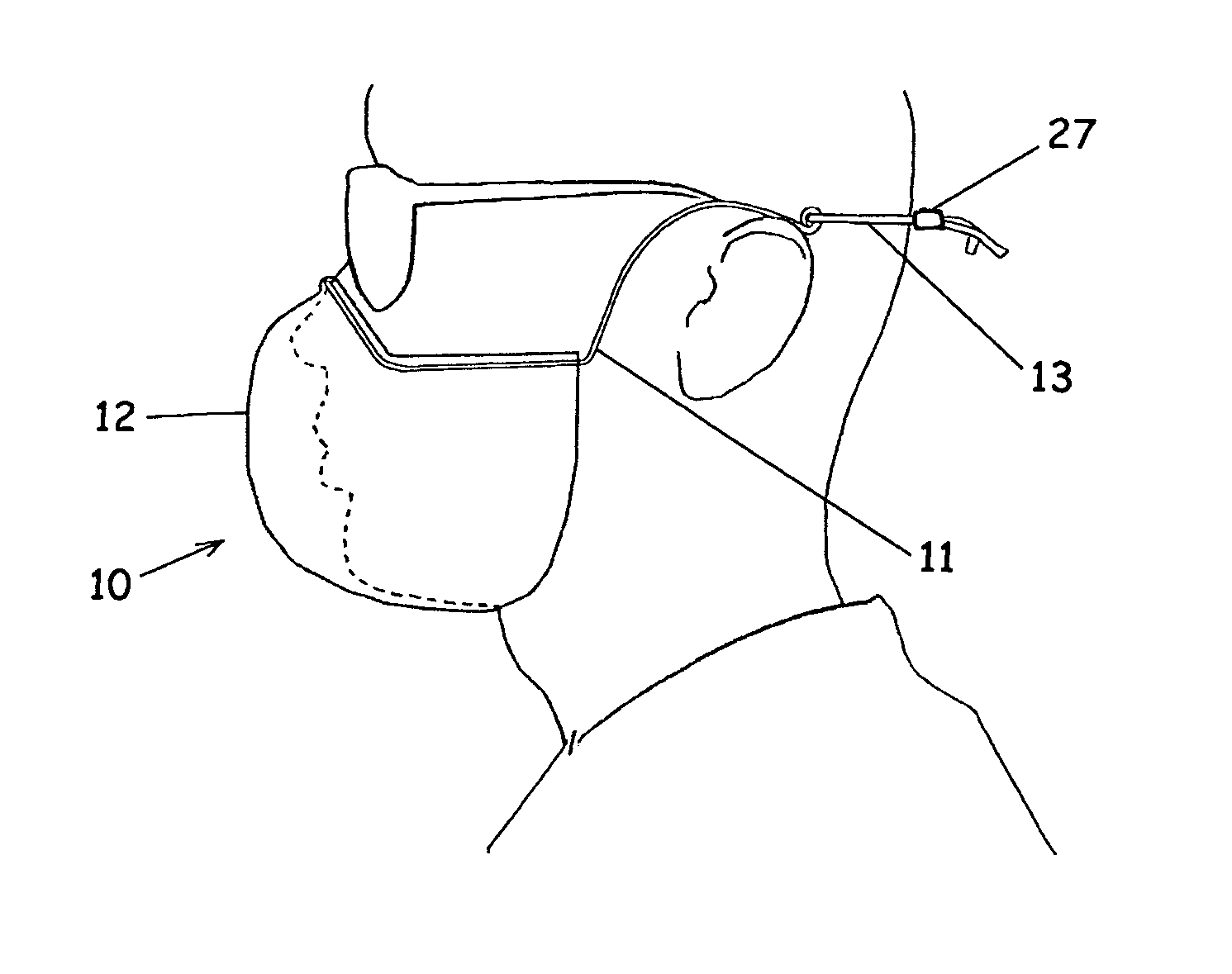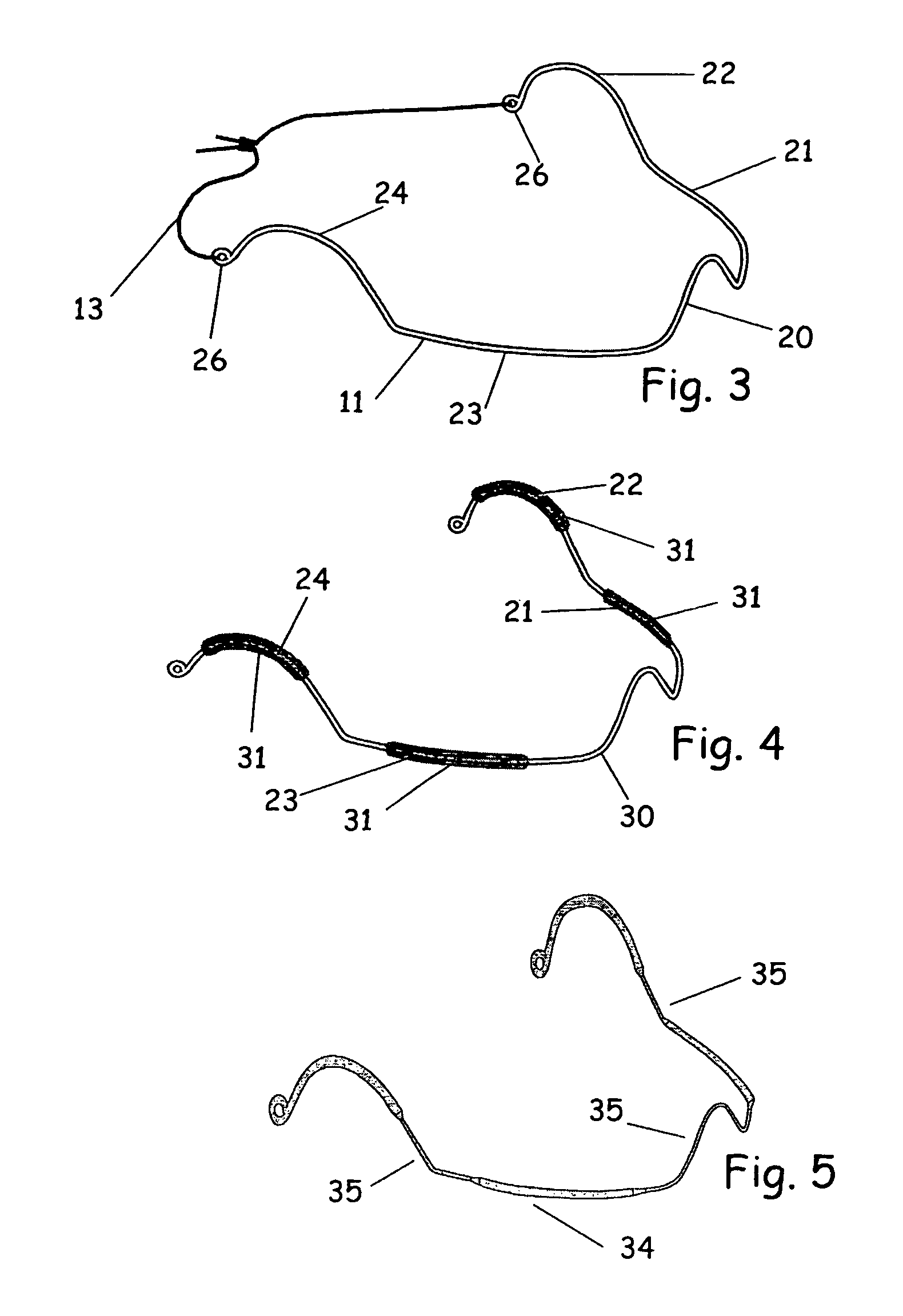Protective mask
a mask and protective technology, applied in the field of protective masks, can solve the problems of affecting the safety of glasses, and affecting the safety of eyesight,
- Summary
- Abstract
- Description
- Claims
- Application Information
AI Technical Summary
Benefits of technology
Problems solved by technology
Method used
Image
Examples
Embodiment Construction
[0014]The protective mask of the invention is described in detail and with particular reference to the drawings. The mask is intended to be personalized by the individual user when initially worn. Some wire frame bending is needed to conform it to the individual's face contour when first used. Minor adjustments can be made later depending on facial changes caused by any number of events.
[0015]FIGS. 1 and 2 are environmental views showing the protective mask 10 of the invention in use. FIG. 1 shows the mask being worn in the in-use mode. A portion of the user's face is in dotted line form to show how a malleable wire frame 11 has been bent to closely follow the contour of the user's nose, cheeks and ears. A filtration bag 12 positioned on the wire frame 11 is sized to cover the user's nose and mouth. It should be understood the filtration bag need not cover the full nose, but most importantly covers enough of the nose to prevent filtered air reaching the nostrils. The filtration bag ...
PUM
 Login to View More
Login to View More Abstract
Description
Claims
Application Information
 Login to View More
Login to View More - R&D
- Intellectual Property
- Life Sciences
- Materials
- Tech Scout
- Unparalleled Data Quality
- Higher Quality Content
- 60% Fewer Hallucinations
Browse by: Latest US Patents, China's latest patents, Technical Efficacy Thesaurus, Application Domain, Technology Topic, Popular Technical Reports.
© 2025 PatSnap. All rights reserved.Legal|Privacy policy|Modern Slavery Act Transparency Statement|Sitemap|About US| Contact US: help@patsnap.com



